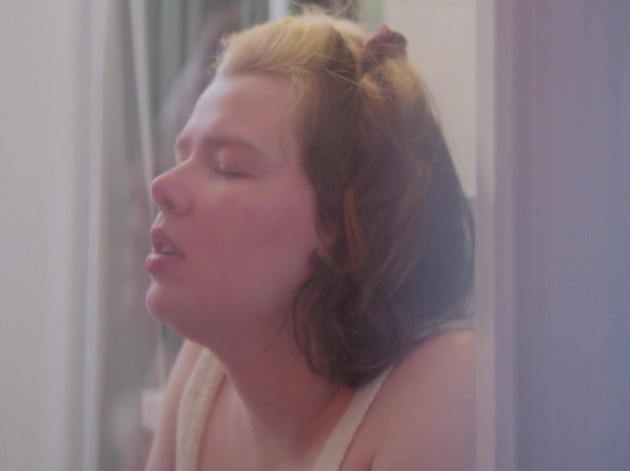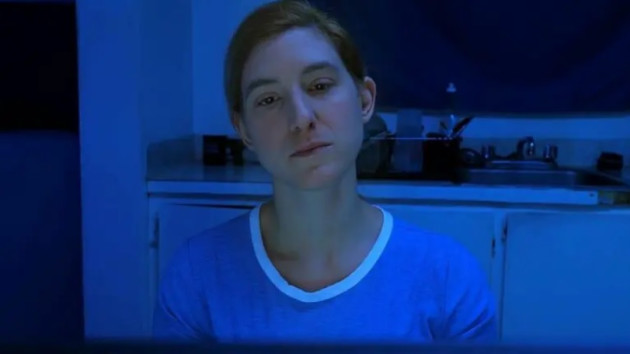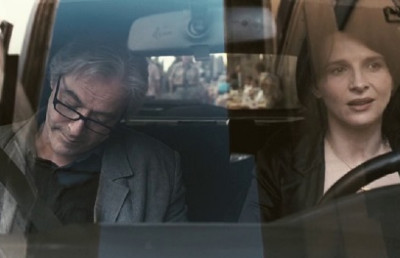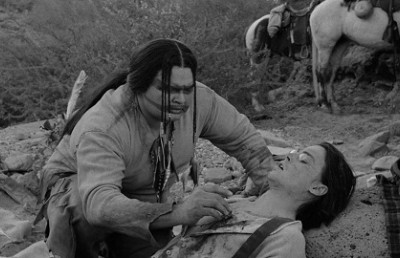Yes! Let’s Make a Movie Film Festival: Adding Horror to Saturday Afternoon

Image source provided by Danny MAlin, Yes! Let's Make a Movie Film Festival
Danny MALin is the creator and driving force behind the one-day (August 26, 2023) Montreal film festival event called Yes! Let’s Make a Movie Film Festival. The title reflects its openness of heart and spirit. The main goal of the festival is to fete local filmmaking which Malin feels does not get the respect and exhibition space it deserves. And the festival makes no distinction between small, indie DYI films or films that have more financial or industry support. Though the majority of the films fall in the former category. With everything happening in one full day prizes (and there are many) are given to films in-between screenings, with a table brimming with the little trophies visible next to the screen. This year marked its 9th edition and, as it was last year, was hosted at the lovely Leonardo Da Vinci center, a proud bastion of the Montreal Italian-Canadian community that since its inception in 2002 serves as a cultural hub for the Italian-Canadian community (and anyone else who wants to benefit from its many programs and events).
I was invited to attend this year’s edition by my good friend’s Johnny Vamvas and Olga Montes-Vamvas, husband and wife actor-filmmaker-writers whose feature film debut Scarpedicimente (2022) played at last year’s edition of the festival (where it scooped up Best Cinematography Award). The day was broken into three distinct programs: Horror (a mix of Montreal, Canadian and International films), Local (all Made in Montreal films), and International (Canadian and International films). The screenings went from 11:00 am to 9:00 pm. I went to the first program, the Horror Program, which ran as a 4 hour block from 11:00 am to 3:00 pm. As MAlin noted afterwards, this was the first time the films were separated by genre because he did not want to ‘sabotage’ viewers who may not be used to the levels of violence found in some horror films. And it was a good idea, given that two of the strongest films in the program had blood quite literally as a main thematic, Diva and Red Tiles. Thankfully the two films did not play one after the other, because that may have taken from their visceral impact. Though playing them together on the same program was an intelligent choice given how different in tone they were even if they both were centered on blood.

Diva (Image source Rémi Frechette)
Both Diva and Red Tiles are what you could call, ‘apartment films’, as they are both set in a single apartment location. Diva (directed by Montréal filmmaker and film programmer Rémi Frechette) is an hilarious post #metoo satire on a common trope for femme-centric horror, menstruation horror (or ‘gynaehorror’ as coined by author Erin Harrington in her recent book, Women, Monstrosity and Horror Film, 2018). Charlotte Poitras is wonderful as the titular character who really takes to her Diva Menstrual Cup! (I wasn’t sure if this was an actual menstrual product or not, but was properly schooled after the screening by Olga, who informed me that, indeed, the Menstrual Diva Cup is real and that, from the product’s website, is “the first tampon alternative….a reusable menstrual cup designed to fit your body and flow for up to 12 hours of continuous protection.”) Poitras seems to be having a particularly heavy period, but is intrigued by what her blood might taste like. She seems hesitant at first as she licks her bloody fingers, but soon enough, her menstrual blood becomes the flavor of the day, as she mixes it into pretty much everything. Salsa anyone? Although the whole thing is played for laughs, gauging from the audience reaction, the queasy factor is still very high. The film’s style, shot in old 1.33:1 Academy Ratio with a high key, soft pastel themed lighting and production design, perfectly captures the neo-camp style director Frechette was going for. Things get even funnier when Poitras’s character meets up with a man she met on social media, Mathieu. Poitras uses some old school charm and new school dominatrixing to get poor Mathieu 100% on board with her idea of ‘menstrual sex’. Poitras physically overwhelms Mathieu, which gives the scene an extra comical edge. When a reluctant Mathieu attempts to leave before Poitras is fully satisfied, she bullies him into pleasuring her with oral sex, with the line (my friend Olga’s favorite line of the day!), “my house, my rules,” before sitting on his face. In classic comedy style, this leads to the follow-up line of Mathieu saying his good byes at the door, “See you next month!”

Red Tiles (Image source Philippe Bourret)
Red Tiles (Philippe Bourret, 2023) matches well with its theme of blood but is completely different in tone to Diva, relying on a slow burn sense of uncertainty in terms of story direction. It is also set in a single set, an apartment, and features a young woman as the only character, played very bravely by Micheline Chartier (playing out the final rhapsodic dance scenes in nude). Chartier is home browsing the web on her laptop to distract herself from her writing, when an uncalled for nose bleed announces itself. Instead of attending to it in any usual fashion, Chartier lets the nose bleed out, allowing it to live out its normal course, dripping further down her face or coming to a dry halt. The nose bleed has the unexpected effect of awakening something in the woman’s inner world. She begins to move around the apartment, take proud selfies of her ‘imperfect’ blood encrusted face and post them to the web. Joy seems to fill her where once she seemed cloistered and inert. She seems to grow in confidence and begins to dance to her chosen music in the kitchen. As she begins to open up, so does the film’s style, which becomes far more expressive in its use of color, movement and rhythm (slow motion is used quite a bit). Not happy with her slow nose bleeding Chartier picks up a pair of scissors, a gesture which immediately put the audience on edge. And with reason. In by far the most violent and queasy moment of the program, Chartier forces the scissor into her nose, letting out a generous river of blood which gives meaning to the film’s title. The film ends with contrasting selfies of a stoic Chartier pre-nose bleed, and a Chartier covered in facial blood, but with a satisfying smile.
The Boogeyman (Phil Borg, 2020) is yet another adaptation of the classic Stephen King short story about a father who is held responsible for the death of his young son. The bulk of the story is the man trying to convince his therapist that his son’s death was anything but natural or a result of murder, but a supernatural event. The first adaptation of this story was a case of King famously selling the rights for a dollar to a young filmmaker named Jeff Schiro. Schiro converted the story into a 28 minute short in 1982, which was anthologized on VHS with two other King stories. Jump ahead 41 years and you have Rob Savage’s feature adaptation The Boogeyman. Borg’s version is far leaner than the first short, and modernizes it by styling it as a desktop film, with the father Jared Nash (played by Borg) talking to his therapist, a young PhD student Carolyn Dupont (Miranda Millar), through a Zoom call. Nash is understandably jittery and guilt ridden over his son’s death. Dupont’s character listens with a caring and generous ear, trying to make sense of Nash’s account of the death, culminating in the fact of the boy’s hair turning completely white at the point of death. Like the original story and filmic adaptations, the film’s twist confirms the supernatural. A distraught Nash calls Dupont in the middle of the night desperate in his isolation, which is augmented by the nature of the Zoom technology. Dupont is helpless as she witnesses the video image of frightened Nash whose own hair has now turned to white.
The Peeper by Ukrainian Sergiy Pudich (2022) is an interesting case where the titular character is not the monster, at least not for the bulk of the story. The film is set in a dance gym rented out by a young dance trainer (Natalia Golovenko) giving instructions on pole dancing to a group of women. The opening sets up the stylish red-tinged lighting palette of the dance space with fluid camera movements that introduce us to the space and the dance students practicing their routines. The session is interrupted when one of the dancers, the slightly older Jane (Ai Wan), notices a carnival masked boy ‘peeping’ at them through curtains (caught in a subjective upside down POV shot). The film establishes that two of the dance students are antagonistic, Jane (Ai Wan) and Olga (Myra Mala), with Olga calling Jane “an old stripper.” The red filtered lighting gives the usual flat lighting of a gym a sinister, appropriate light (Red District anyone). The trainer, who is very protective of her charge, investigates the peeper by visiting the only other open business resident on site, a camera surveillance company, run by a sinister middle-aged man, played with immediate creepy vibes by Warwick Gilles, with his young son (Georgio Cafiero). The man does not hide his rabid misogyny, which removes any suspense but builds menace. As the class ends and the trainer is about to start her motorcycle, she receives an alarming text from Jane threatening Olga (“Nobody dares to call me BITCH”). Fearing a violent altercation between her two students she returns to the gym, only to find a dead Olga splayed out on the stage with the word ‘bitch’ carved blood red into her abdomen. Is Jane the culprit? The trainer screams but is met quickly, too quickly, by Warwick, who comforts her and tells her to come to his office where she will be save. We know better. The trainer spots a bloody shirt on the floor and realizes she has fallen into the spider’s web. They struggle and he chases her back into the gym, where Natalia’s dance skills come to the forefront with a sweeping ‘martial arts’ styled pole dance kick that plants her 7 inch stiletto heel straight through the man’s temple (a sure-fire crowd pleasing moment). The final image is a menacing slow dolly into a close-up of the man’s son wearing the same Mardi gras mask staring at the camera. Who is the real peeper? This final image might just be director Pudich implicating the audience as the “real peepers’?
Galatea by Montrealer Julien Ahmaranian (2023) is a five minute mood piece filmed in black & white and set entirely in a single set, a dank, medieval room. The only character is a 30-something artist (played by Gabriel Caron) grieving over the death of his wife, who informs his art and preoccupies his every waking minute (we see a painting of her, a white-sheeted sculpture we can only assume is of her, and an urn on his dresser). The man’s grief is transmitted by the gorgeous candle-lit lighting (the film won an award for cinematography, by Darryl A. Aljo) but also holds one particularly unnerving moment, when our eyes catch a glimpse of the sheeted sculpture moving in the far background of a shot. Anyone aware of Greek history may see the end coming, as the title refers to the Greek myth of an ivory statue that comes to life. But the film achieves its modest aim with formal brilliance. I was pleasantly reminded after the screening that the director Julien Ahmaranian was a former film student of mine!
Predation, co-directed by Manon Lantignac and Lilou Romans (France, 2022), is also a single set film, the modernist apartment complex of an attractive young single woman named Lilou (played by the alarmingly photogenic Alessa Raschella). After posting some stylized sexy photos of herself on social media, she becomes victim of a violent home invasion by a horde of men (seven according to the credits). The claustrophobic nature of the attack is made to feel both real and surreal by the elliptical editing, saturated color coding and low key lighting. After the attack she checks her phone and sees a message warning her to “keep to herself rather than playing the whore on social media”. Battered and bruised, Lilou deliberates how to respond to this distasteful, reactionary message, and decides to continue publishing her photos. Apparently this was a university school project which aimed at exploiting the horror genre (the co-filmmakers cite Haute tension, Mother! and The Babadook as influences) to make a positive political statement empowering women to take control of their body and image, against conservative, violent or reactionary tendencies to do otherwise.
Old Flames (The Fugitives, 2022) is a dialogue-less music video by the folk-roots music group The Fugitives, with the song written and sung by Abigail Lapell. It is an affective allegorical take on addiction recovery, with the main character, a young Asian woman (Mylese Carino) haunted everywhere she goes (home, laundromat, at work, at her group therapy) by a nude man wearing antlers. In the group therapy scene the camera dollies back to reveal a circle of people all accompanied by their own ‘personal demon’. Simple, stark and at the same time somewhat unsettling (especially the final shot of the woman sleeping in bed, with the shadow of someone or something briefly moving toward her as the shot fades out)..
An Angry Knock (Sarbast Raza Garmiany, 2022) is not a horror film in the strict sense but a social drama that accurately and realistically (with great performances by everyone) depicts the hardships and pressures faced by families newly immigrated to Canada (in this case Vancouver). In this case the relationship between two recently emigrated families, from I believe Iraqi Kurdistan, is placed in turmoil by the relationship of their two sons, Omar (Darian Smile) and Safeen Kiawash Bdookh). After losing continuously in video games to Omar, Safeen threatens to expose the fact that Omar’s father Kamil (Niwar Ameen) is not his real father, an act which could result in their deportation. Meanwhile Omar retaliates to the threats by beating up Safeen, which angers his parents Rizgar (Rzgar Hama Rashed) and Taban (Taba Kurd), who, unaware of their son’s threats, feel aggrieved because they have helped their neighbors in their adjustments to Canada. Garmiany’s hand-held camera and music-less soundtrack adds to the social realism and places the emphasis on the performances and cutting between the two families. Everything is thrown for a loop halfway through during a tense scene between the two fathers discussing the situation in Rizgar’s car where Rizgar reveals that he knows more family ’secrets’, suggesting Kamil’s ties to Isis. At this point Rizgar exits the car and the scene cuts to an over-the-head shot of the car, which immediately destabilizes the film from its previous realist mode. Kamil disproves the accusation, and Rizgar drives off. We learn that Omar’s real father (seen briefly in photographs) was involved with Isis, and the question now becomes, how inculcated was his son, Omar, to his father’s political activities? When Kamil takes his wife’s phone away from a sleeping Omar and see photos of his wife with her former husband, armed and dressed in military clothes, he begins to doubt her motives and love for him. Maybe not a horror film. But tension, isolation, suspicion, cultural dislocation, these are the real horrors played out in An Angry Knock.
Apparently I missed out on some great films in the evening program, but I was more than happy to see the day program, which offered up a nice menu of gory, funny, scary, and thought provoking short films. I look forward to what Danny MAlin and his team will put on next year’s menu.














